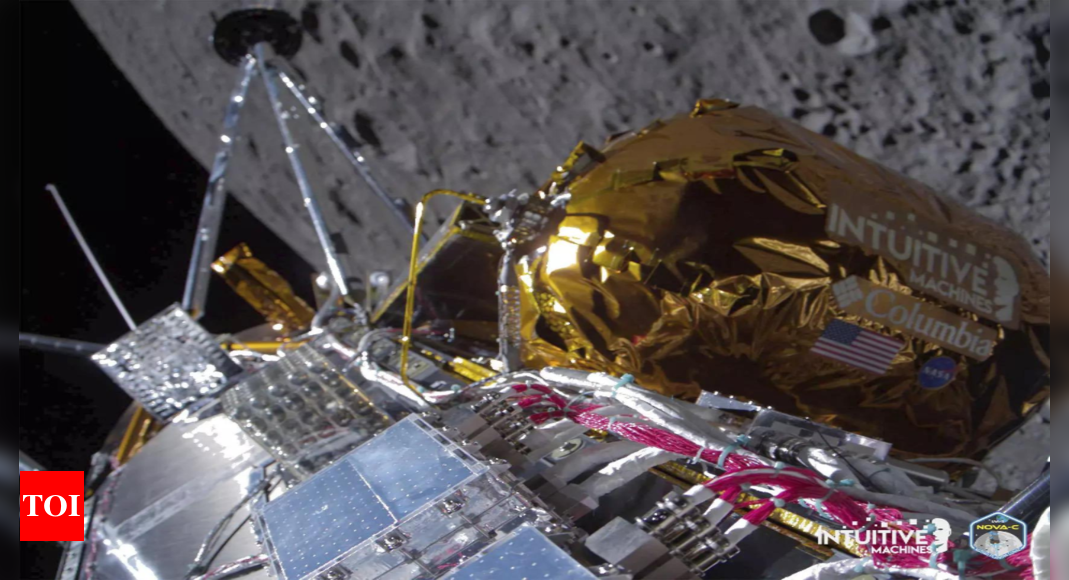The first American spaceship on the Moon since Apollo faced a dramatic landing when it caught on a rock during its descent. Odysseus, built by Intuitive Machines, successfully landed near the lunar south pole after a nail-biting final descent and switch to a backup guidance system. Despite initial reports that the hexagonal spaceship was upright, it was discovered that it was lying on one side. However, the solar arrays are functioning and NASA experiments could still be operational. The landing complications prevented real-time capture of the event, but an external camera will be deployed to capture an image of Odysseus later. The success of the landing is crucial for private industry to demonstrate capabilities in lunar exploration, as NASA aims to return American astronauts to the Moon under the Artemis program. Intuitive Machines faced technical challenges during the landing, but confirmed the success of the mission and transmission from the Moon’s surface. The company was paid $118 million by NASA for carrying six experiments and cargo for private customers, contributing to the development of a wider lunar economy. In the long term, the United States and international partners plan to establish habitats and utilize the Moon’s resources for future Mars missions. While this landing was a breakthrough for private lunar exploration, China also has plans to put its first crew on the Moon by 2030.
American Spaceship Facedown on the Moon After Dramatic Touchdown











